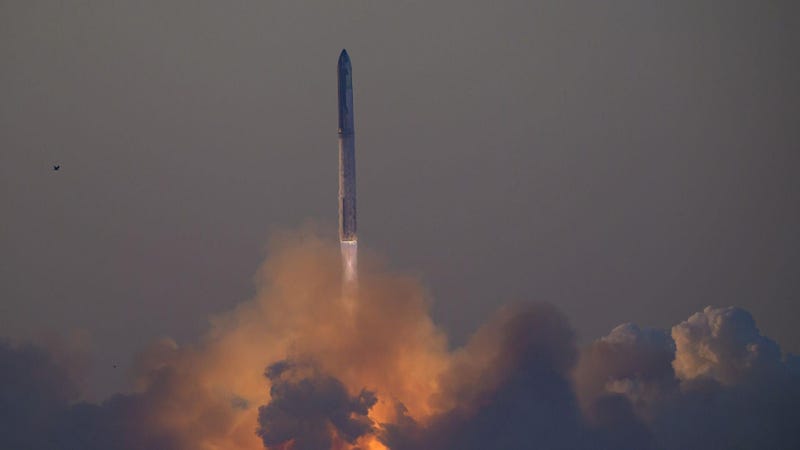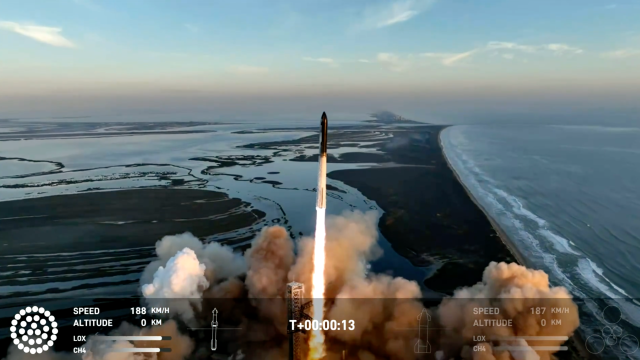SpaceX’s latest test flight of the Starship rocket lasted for around eight minutes—twice the length of the previous test. Both the booster and the Starship upper stage were lost, but SpaceX achieved many key milestones during the flight test.
The rocket left the Boca Chica launch mount at 8:03 a.m. ET on Saturday morning, with water blasting upwards to quell the power of 33 Raptor engines coming to life. The upgraded launch mount appeared to work as intended, with the booster not spewing as much dust and debris as was seen during the inaugural launch on April 20. This marked the second flight of Starship—the world’s most powerful rocket, albeit a rocket not yet certified for real-world missions.
Countdown preparations began at 6:00 a.m. ET, with SpaceX’s flight director performing a poll and verifying “go” for propellant load, The rocket’s fuel is a blend of liquid methane and liquid oxygen. At T-minus 10 minutes, the Starship’s 39 Raptor engines, including 33 on the Super Heavy first stage and six on the upper-stage spacecraft, underwent chilling ahead of ignition.
Two minutes and 41 seconds after liftoff, the hot-staging sequence—a process in which the upper stage’s engines ignite just before stage separation—unfolded as planned, with the booster falling away from the upper stage. Moments later, however, the booster exploded, in what SpaceX described as an “unscheduled disassembly.” SpaceX said there was a chance the booster would not survive given the tremendous “load on top of the booster,” and that data from this mission will be used to improve the process and hardware used.

The upper stage Starship continued along its journey, but it appeared to fail just prior to SECO, or Second Engine Cut Off. The automated flight termination system triggered late in the Starship burn, but the reason is not yet clear.
The focus now shifts to the analysis of this test’s data, which will be crucial for diagnosing the failures and guiding the necessary modifications. SpaceX’s iterative approach to design and testing is expected to play a key role. The company will likely schedule a third test flight, with parameters to be determined after a thorough review of this mission’s results. The next step is to nail stage separation, but other future milestones include a launch to orbit, reentry from orbit, and vertical landings of both the booster and the upper stage.
